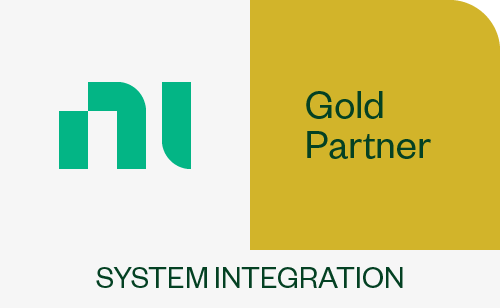Energy
The Energy category contains Case studies and blogs related to ITM’s energy engineering services.
Troubleshooting Mechanical Failures with Operating Deflection Shape (ODS) Analysis
in Aerospace | Defense, Automotive, Blog Posts, Civil | Infrastructure, Energy, Off-Highway, Power Generation, Pulp & Paper/by Mark YeagerTransform Your Silo into a Smart Weighing System with IoT and Strain Gauge Technology
in Blog Posts, Energy, Power Generation, Pulp & Paper/by Mark YeagerPredictive Maintenance with Amazon Monitron Sensors
in Aerospace | Defense, Automotive, Blog Posts, Civil | Infrastructure, Energy, Engineering Services Posts, Off-Highway, Power Generation, Pulp & Paper/by Mark YeagerStrain Gauges Improve Cooling Tower Fan Performance
in Blog Posts, Civil | Infrastructure, Energy, Power Generation, Pulp & Paper, Strain Gauge Services/by Mark YeagerITM connects with future engineers at UC Career Fair
in Aerospace | Defense, Automotive, Blog Posts, Civil | Infrastructure, Construction | Mining, Energy, Off-Highway, Power Generation, Pulp & Paper/by Mark Yeager
ITM connects with future engineers at UC Career Fair
Mixed among the buzz of voices inside the massive six-court gymnasium at the University of Cincinnati Technical Career Fair this week, ITM connected with a ton of impressive engineering students.
Potential full-time employees and co-op students heard for the first time about our engineering firm in Milford, Ohio. It is always a joy to watch their eyes light up as we share the projects our team has the opportunity to deploy across the country and around the world.
The aerospace students hear that we work on rockets. The mechanical engineering students learn of the rugged measurements we collect on massive machinery. And the computer programmers discover that we’ve spun up our own software products.
The reaction is almost always the same: “Wow! I had no idea.”
For our team, the day is equally as fulfilling as we connect with the next generation of engineers eager to get to work and apply their knowledge.
Our firm is interested in filling full-time roles for students graduating with a degree in mechanical engineering, mechanical engineering technology, electrical engineering, electrical engineering technology and aerospace engineering.
Are you a current student or recent graduate who loves adventure, travel and has an entrepreneurial spirit? Discover a culture driven by innovation at ITM. Check out our job postings or fill out our co-op questionnaire (/jobs/).
Come Visit our Booth at the UC Career Fair
in Aerospace | Defense, Automotive, Blog Posts, Civil | Infrastructure, Construction | Mining, Energy, Off-Highway, Power Generation, Pulp & Paper/by Mark Yeager
Looking for a new career? Come visit us at the University of Cincinnati Career Fair!
Where: UC Rec Center, Booth G18
When: Sept. 15th, 2022 – 10AM – 2 PM
For more information about available jobs, contact Josh Fishback via email: josh.fishback@itestsystem.com or phone: (844) 837-8797.
ITM Recruiting Full-Time Engineers at UC’s Fall Career Fair
in Aerospace | Defense, Automotive, Blog Posts, Civil | Infrastructure, Energy, Off-Highway, Power Generation, Pulp & Paper/by Mark Yeager
ITM Recruiting Full-Time Engineers at UC’s Fall Career Fair
University of Cincinnati students have an enormous opportunity to make a career-changing connection during the Professional and Technical Career Fair on Thursday, September 15.
Integrated Test & Measurement (ITM) will host a booth during Technical Day 2 of the event at UC’s Campus Recreation Center. Interested students can find ITM representatives from 10 a.m. to 3 p.m.
Our firm is interested in filling full-time roles for students graduating with a degree in mechanical engineering, mechanical engineering technology, electrical engineering, electrical engineering technology and aerospace engineering.
In addition to seeking full-time hires, we are searching for talented students who are interested in experiencing a dynamic and fulfilling co-op opportunity where you will have a chance to learn through exciting, hands-on engineering projects around the country.
ITM is a structural test & measurement engineering service and software company in Milford, Ohio, that focuses on three vertical spaces: Industrial Monitoring, Testing Services, and our configuration based test software, iTestSystem.
ITM offers competitive compensation and benefits and a career filled with travel and new learning opportunities. ITM was founded by Tim Carlier in 2001 to help companies around the world reduce costs and improve efficiencies in their product development, manufacturing and production activities.
Interested candidates should stop by our booth inside UC’s Campus Recreation Center from10 a.m. to 3 p.m. on Thursday Sept. 15 and/or email a resume and cover letter to: josh.fishback@itestsystem.com.
Our team will also be drawing for free hats and T-shirts, so be sure to find us during the event to learn more about ITM.
Printed Circuit Board Strain Testing – JEDEC-9704A
in Automotive, Blog Posts, Energy, Off-Highway/by Ryan Welker
ITM Employs JEDEC-9704A to Test Strain on Printed Circuit Boards
ITM Employs JEDEC-9704A to Test Strain on Printed Circuit Boards
Every modern electronic device includes at least one printed circuit board, so it stands to reason that these intricate parts fail at times due to stress and strain.
When that happens, manufacturers know they can turn to ITM’s test engineers who can develop tests to help get to the bottom of their circuit board problems. For some, the failures are happening in the field, and for others, it’s the manufacturing process that’s overstressing the parts that make all our gadgets go.
Engineer Ryan “RJ” Matthews said ITM has decades of experience with printed circuit boards (PCBs), including circuit board design and development. So, strain gauge testing on PCBs using JEDEC-9704A, the global standard for microelectronics, is a natural progression for the team.
Matthews has led recent projects in which ITM helped companies determine how much strain and stress their PCB is experiencing both in the field and during the assembly process. Simulating the assembly process can be a daunting challenge, particularly if that process includes variables such as high heat, as it did in a recent example.
Still, the team was able to instrument the circuit board effectively and replicate every assembly step while also gathering crucial strain data, which they reported back to the client. The challenging test environment isn’t unlike ITM’s typical rugged data acquisition projects, just on a much smaller scale. The firm specializes in strain gauge data collection on everything from behemoth off-road machinery to miniscule gadgetry.
Matthews said the team often employs NI c-DAQ hardware combined with ITM’s proprietary iTestSystem software, which allows them to easily configure PCB tests to collect and analyze the data. iTestSystem’s Rosette Analysis tool is used to calculate the principal strain, principal strain angle, shear strain, principal stress, and other values from strain gauge rosette data.
For more information on this work, our strain gauge testing services or iTestSystem, contact: Ryan Welker – Integrated Test & Measurement (ITM), LLC – ryan.welker@itestsystem.com
ITM Co-op Helps Engineering Student Set Sights Even Higher
in Aerospace | Defense, Blog Posts, Civil | Infrastructure, Energy, Off-Highway, Power Generation, Pulp & Paper/by Ryan Welker
ITM Co-op Helps Engineering Student Set Sights Even Higher
Tyler House’s dream career began to come into sharper focus during his spring co-op at Integrated Test & Measurement.
After four months at the Milford, Ohio, firm the University of Cincinnati electrical engineering student headed into his summer feeling both excited by his work experience and inspired to emulate ITM CEO Tim Carlier one day by starting his own company.
“I know I want to do something I love,” said Tyler, who had just returned from a trip to Disney with his girlfriend to celebrate the end of the semester. “I’d like to start my own company someday. I’ve been poking at that idea. Definitely a big dream of mine is having that freedom and doing something that means a lot to me.”

Perhaps the only thing that equals Tyler’s love of engineering is his love of music. He and a few fellow graduates from Clermont Northeastern (CNE) high school started a band called Wishbone, which has started lining up local gigs to cover rock and blues tunes stretching back a half century.
Tyler’s two worlds collided on the last day of his co-op when a couple of engineers from ITM dropped into his band’s “first bonafide show.”
“It was so much fun watching their reaction,” said Tyler, who employs his electrical engineering skills to repair the band’s gear when things inevitably break. “I love that they came.”
Coincidentally, like Wishbone, ITM’s entire leadership team — the CEO, VP of Operations, Lead Programmer and Administrative Director — are all CNE graduates. For Tyler, seeing that level of success from the same small high school as him was only more of a confidence lift.
He loves the entrepreneurial and inventive culture at ITM, where staff members are constantly tackling new challenges. “It’s really just a great place to figure out what you are into,” he said.
Tyler found himself learning a ton about Fusion 360, a cloud-based 3D modeling program, while researching mechanical properties and simulating failure modes on a bolted joint. He said he spent about half his co-op in the office doing things like assembling Data Acquisition (DAQ) boxes and the other half on the road working on-site. Experiences included everything from climbing inside massive paper mills to helping gather data on equipment operating in remote locations all over the country.
“In talking with my friends who have had co-ops, it’s hard to get to work in a place where you feel like you can make a difference and actually help fix problems,” said Tyler. “I definitely felt that. I learned really fast about how to deal with mistakes and just general problem solving.”
Besides the on-the-job learning, he loved exploring new places, national parks and more with the ITM crew after hours. He’s hoping to pick up some work helping ITM with any projects through the summer, and he’s interested in returning during his next co-op rotation in Spring of 2023.
Meanwhile, he’ll keep poking at his dream of someday owning his own company.
“You just have to go out there and get it,” Tyler said. “If you are aggressive about it, you will fail a bunch. But you’ve got to be able to get up off the ground and just keep rolling with it.”
For more information about Co-op or employment opportunities at ITM, contact Josh Fishback via email at josh.fishback@itestsystem.com or phone at (844) 837-8797 x705.
CONTACT INFORMATION
ITM | Integrated Test + Measurement
227 Water Street, Suite 300
Milford, OH 45150
Phone: 1.844.TestSys
Fax: 513.248.8453
Email: ITM Sales

ITM provides software development, structural and mechanical testing services, industrial monitoring, strain gauging, and data analysis solutions to clients on six continents. ITM is a recognized National Instruments Gold Alliance Partner.

